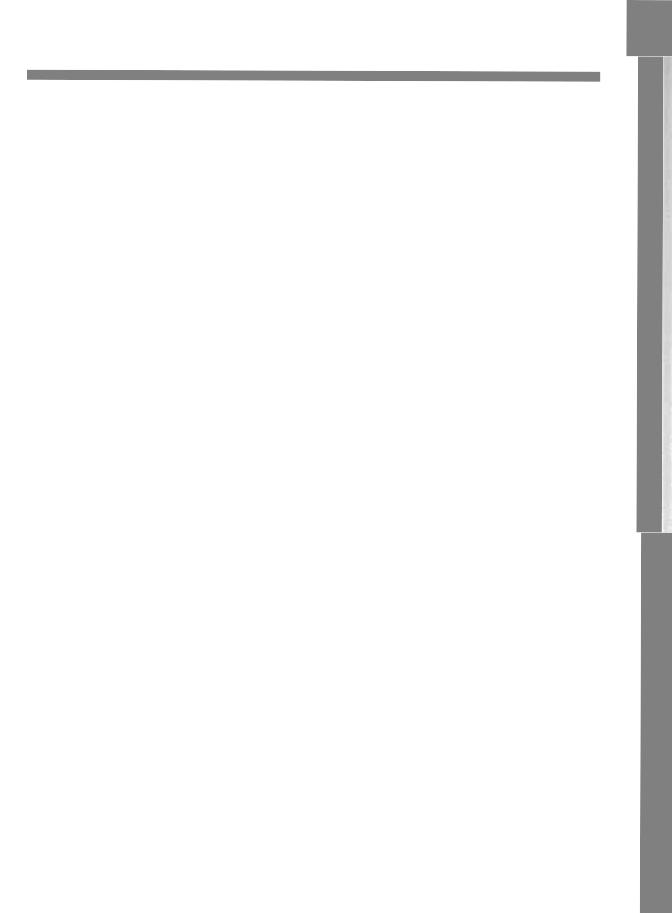
Stella_Cottrell_Critical_Thinking_Skills_Deve
.pdf





Practice 4: Finding flaws in the araument
The idea of a natural order was used to bolster the |
Comments |
authority of those with social and economic power. |
|
Mary Wollstonecraft (1792) argued that the concept of |
a |
natural order was used to justify all kinds of injustice. |
|
She argued that people who were cruel to animals and children, were also likely to agree with the slave trade, and the oppression of women, which she opposed.
However, she clearly thought it was acceptable to lump humans who lacked money and power into the same bracket as animals. As animals were lower down the chain of being at that time, her comparison of animals with humans who lacked power shows she thought of poor people and slaves as being lower types of being. Her prejudices are typical of ruling class women from that period.
Clearly, rich people in the eighteenth century found the idea of a natural order beneficial. This is particularly outrageous when one considers how vulnerable the poor were at the time, how sad their lives and how dependent on a kind word from their social betters. People were taught to regard those richer than themselves as their 'betters' and to refer to them as their masters. People were meant to accept that they must regard others as superior by virtue of their birth, and to defer to them in all things.
The idea of a natural order was strong even in the beginning of the twentieth century. After the Great War of 1914-18, working men and women gained the vote and social mobility increased. Far fewer people worked as domestic servants after the war. Having a vote on equal terms made people realise that democracy was a good thing and seems to have made them less keen to do jobs as servants. If everyone had the vote, then they were equal before the law, and if they were all equal, then there evidently wasn't a natural order, so the idea of a natural order was bound to die out and the vote would bring about the end of social hierarchies.
Such change would be welcomed. Many judges, priests, politicians and educators, argued that the chain of being was part of God's plan and this effectively frightened people into compliance with the way the country was run. Clerics such as Watson, the Bishop of Llandaff, wrote that it was God who let people get rich and powerful, signs of his favour and proof of their superiority. Other writers said similar things. For example, a poster in 1802 wrote about it being 'the
36 Critical Thinking Skills |
O Stella Cottrell (ZOOS), Criticnl Tllinkirzg Skills, |
Palgrave Macmillan Ltd

Practice 4: Finding flaws in the argument
ordinance of God' that the world was graded into |
Comments |
different levels of being. Another, a pamphleteer (Pratt, |
|
1803), argued that changing the order established by |
|
God would 'unsettle the whole system of the spheres; |
|
the planets would rush on each other . . . and the earth |
|
be shrivelled, like a scroll, by a spark from the sun'. |
|
However, Pratt was obviously not very bright and had a |
|
very poor grasp of science so was not likely to be taken |
|
seriously by his contemporaries. |
|
One person who contributed most to perpetuating ideas |
|
of a natural order was the Swiss scientist Kaspar Lavater. |
|
His work was translated into many languages and used as |
|
a manual by the educated classes when they were |
|
employing new servants or making judgements about |
|
new acquaintances. Lavater invented a new science |
|
known as physiognomy which set out to prove that a |
|
person's character could be read from their facial features |
|
and the shape of the skull. Lavater (1797) argued that |
|
certain features were typical of a higher class of people, |
|
who were more moral and typical of the European ruling |
|
classes. He argued that other features, such as those |
|
shared by poorer people, and people with darker skins, |
|
were signs of an inferior nature, closer to the animals. |
|
Obviously, this was nonsense and no right-minded |
|
person would believe that physical features such as your |
|
skull would reflect your morals or worth. This would be |
|
like assuming that the way people walk tells you how |
|
healthy they are. However, many people at that time |
|
believed strongly in this method of working out who |
|
was superior and who inferior. |
|
In the eighteenth century, people were more likely to |
|
believe in progress and change in the surrounding world, |
|
rather than a static concept such as the natural order. |
|
There were people who used the concept of the chain of |
|
being in an instrumental way, to frighten or coerce |
|
people into accepting that there was nothing they could |
|
do to change their lot. Certain applications of the idea of |
|
'natural order' were adopted by richer people, but this |
|
practice was likely to have been a fad or fashion, like |
|
doing a quiz in a magazine today. Others used the idea |
|
to bolster their own sense of superiority. However, it is |
|
not likely that most people took such ideas seriously in |
|
the way they led their lives and made choices. In this |
|
respect, notions of the great chain of being and the |
|
natural order were not significant by the end of the |
|
eighteenth century. |
|
O Stella Cottrell (ZOOS), Criricnl Tlzinking Skills, |
Practice activities on longer texts 237 |
Palgrave Macmillan Ltd |
|

Practice 4: Finding flaws in the argument
References [compare with Practice 3, p. 2331
Primary sources
Anon (1802) Srrch is Buonaparfe, London.
Kaspar Lavater Essays on Physiognomy, Translated by Rev. C. Moore and illustrated after Lavater by Barlow, London, 1797.
Pratt, Platt's Address to His Colmtryrnen or the ~ ; . u eBorn Englishman's Castle. London.
Bishop of Llandaff
Mary Wollstonecraft (1792) Vindication of the Rights of W o m s ? .Middlesex.
White, C. A n Accoztnt of the Infinite Grarlntions in Man
(Read to the Literary and Philosophical Society of Manchester at Different Meetings) (1779).
Secondary sources
Comments
I
I
Madison. (1967) The end of the Chain of Being: the impact of Descartian. Journal of Medieval and Enlightenment Studies, 66; 7.*
Barking, J. K. (1957) Changes in Conceptions of the tmiverse. Cotteridge: Poltergeist Press*
Linda Colley (2003) Captives.
Holmes, Geoffrey. (1977) 'Gregory King and the social structure of pre-industrial England' Transactions of the Royal Histoiy Society, 27
Pendleton
E.P. Thompson The Making of the English Working Class
(1963) Middlesex: Penguin
* These two sources are hypothetical and provided for the purpose of the practice activity; the other sources are genuine.
238 Critical Thinking Skills |
O Stella Cottrell (2005), C~iticnlTl~inkingSkills, |
|
Palgrave Macmillan Ltd |


Practice 4: Finding flaws in the argument
References [compare with Practice 3, p. 2331 |
Comments |
Primary sources |
|
Anon (1802) Such is Bzconaparte, London. |
|
Kaspar Lavater Essays on Plzysiognomy, Translated by Rev. |
|
C. Moore and illustrated after Lavater by Barlow, |
|
London, 1797. |
|
Pratt, Pratt's Address to His Corlntryrnen or the he Born |
|
Englishman's Castle. London. |
|
Bishop of Llandaff |
|
Mary Wollstonecrafi (1792) Vindication of the Rights of |
|
Womerz. Middlesex. |
|
White, C. A n Accorint of the Infinite Gradatiorzs in Man |
|
(Read to the Literary and Philosophical Society of |
|
Manchester at Different Meetings) (1779). |
|
Secondary sources |
|
Madison. (1967) 'The end of the Chain of Being: the |
|
impact of Descartian. Journal of Medieval and |
|
Enliglztenrnent Studies, 66; 7.* |
|
Barking, J. K. (1957) Changes irz Conceptions of the |
|
miv verse. Cotteridge: Poltergeist Press* |
|
Linda Colley (2003) Captives. |
|
Holmes, Geoffrey. (1977) 'Gregory King and the social |
|
structure of pre-industrial England' Transactions of the |
|
Royal Histoy Society, 27 |
|
Pendleton |
|
E. P. Thompson The Making of the English Working Class |
|
(1963) Middlesex: Penguin |
|
* These two sources are hypothetical and provided for |
|
the purpose of the practice activity; the other sources are |
|
genuine. |
|
238 Critical Thinking Skills |
0Stella Cottrell (2005),C~iticnlThinking Skills, |
|
Palgrave Macmillan Ltd |
